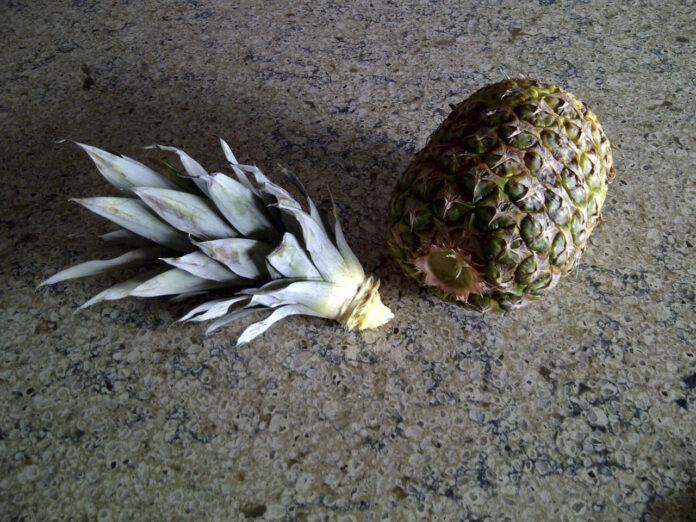by Sara Williams
Saskatchewan Perennial Society
Kitchens tend to be busy places during the winter. It’s also the time of year when we’re most apt to savour the exotic. What doesn’t go into the compote, need not end up in the compost. Kitchen propagation with your kids with the pits can be an opportune learning experience.
Once you’ve prepared your guacamole,wash and dry the large avocado seed. Plant it with the small pointed end poking up through the soil. The soil should be kept moderately moist without being overly wet, but never be allowed to dry out. You probably won’t get the medium size tree native to South and Central America, but you should be able to produce a respectable house plant.
An alternative method, that also can be used with mangoes and sweet potatoes, involves toothpicks. Insert three toothpicks into the side of the seed about 1/8 inch deep, as in the spokes of a wheel, and carefully suspend the seed over the rim of a glass of water so that an inch and a half of the pit is submerged in the water. Don’t allow it to dry out. Once the roots develop, transplant it to soil.
Place the container in bright light, but out of direct sun, until the roots and shoots emerge. Be patient, this may take a few months. Then move it to full sun. To encourage branching, pinch out the central stem when the plant is about 15 cm (6 in.) high. Expect fairly rapid growth from this point on.
Mangoes, large trees native to India, are grown in a similar manner to avocados but can be more difficult. Plant the seed with the eye or bud facing up, just covering it with loose soil, or use the toothpick method. Keep it warm and moist. The young leaves may be red but will change to green on maturity.
Sweet potatoes, long cultivated in Central America, can be grown by the soil or toothpick method, but use the entire tuber with half of it submerged. First, wash it off thoroughly to remove any growth inhibitors that may have been applied to keep them from sprouting in the grocery store. (This in itself could make a good consumer education project. Try this with one washed, the other not.) Place it in full sun. Roots and shoots will develop into a luxurious vine and it will continue to grow until it has exhausted the resources of the tuber. At that point, the new shoots can be used as cuttings: root them in sand and then plant them in a soil mix.
Pineapples are members of the large tropical bromeliad family, originating in South America and the West Indies. First brought to European attention by Christopher Columbus, they are the only member of this family that bears edible fruit, and one of the few with its feet stuck firmly in soil – the vast majority of bromeliads spend their life perched on trees as epiphytes. Select a pineapple that is relatively large and with the freshest crown of leaves in the store. Remove the top (including the green leaves) together with about an inch of the fruit, trimming away the soft sweet parts and leaving the hard stringy tissue. Allow the cut surface to dry for a few days to form a callus layer to prevent decay. Plant the top in sand, keeping it evenly moist but not overly wet. Bromeliads naturally collect water in their central “vase”. Move it to a well drained soil mix in full sun once it has rooted.
Oranges, lemons and grapefruit can also be grown from seed, sowing them about 2 cm (1/2 in.) deep. I stuck some in a large pot in which a mature fig tree was already growing and simply forgot about them. Expect germination within 6 weeks. They like a rich soil in a deep pot in full sun but seem to handle benign neglect very well. They’ll grow into large shrubs with shiny leaves.
Besides the hands-on experience, these projects can involve a trip to your local library to find out more about these plants and their native habitats. But don’t expect your labour to bear fruit. These plants seldom produce indoors unless provided with cross-pollination and/or conservatory-like conditions.
This column is provided courtesy of the Saskatchewan Perennial Society (SPS; saskperennial@hotmail.com ). Check our website saskperennial.ca) or Facebook page (facebook.com/saskperennial). All Saskatchewan Perennial Society events are on hold until further notice.


